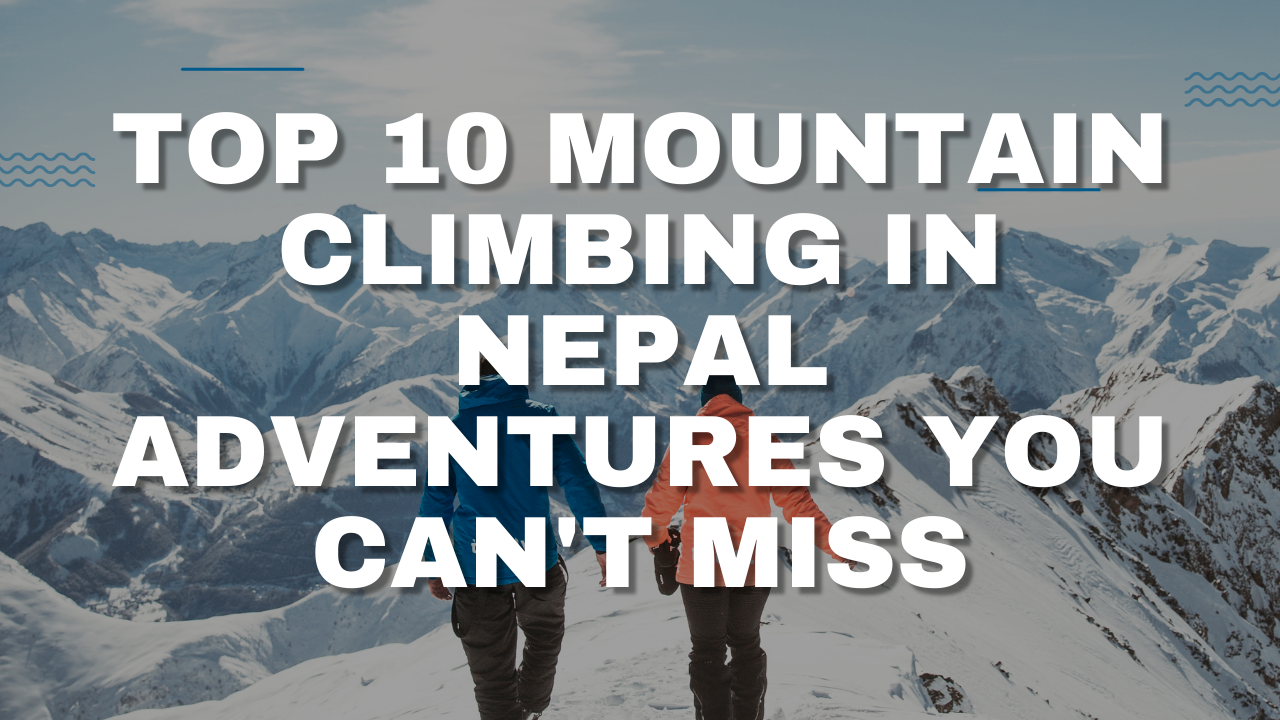If there’s one place on Earth that defines epic adventure, it’s Nepal. Home to eight of the world’s fourteen tallest peaks, this Himalayan nation has long been the dream destination for climbers and trekkers alike. Whether you’re chasing the ultimate challenge of Everest or looking for more approachable peaks like Island Peak and Mera Peak, Nepal offers a spectrum of Mountain climbing in Nepal experiences that are as breathtaking as they are humbling.k
Table of Contents
The Allure of Mountain Climbing in Nepal
Why does Nepal attract adventurers from every corner of the world? Simple—nowhere else can you find such a concentration of giant peaks, diverse landscapes, and deep-rooted Mountain climbing in Nepal. The Himalayas aren’t just mountains; they are living legends, blending raw adventure with spiritual calm. Every climb here is a test of endurance, but the reward is worth every drop of sweat—a panoramic view above the clouds that feels like touching the heavens.
Top 10 Mountain Climbing Adventures in Nepal
1. Mount Everest (8,848m)
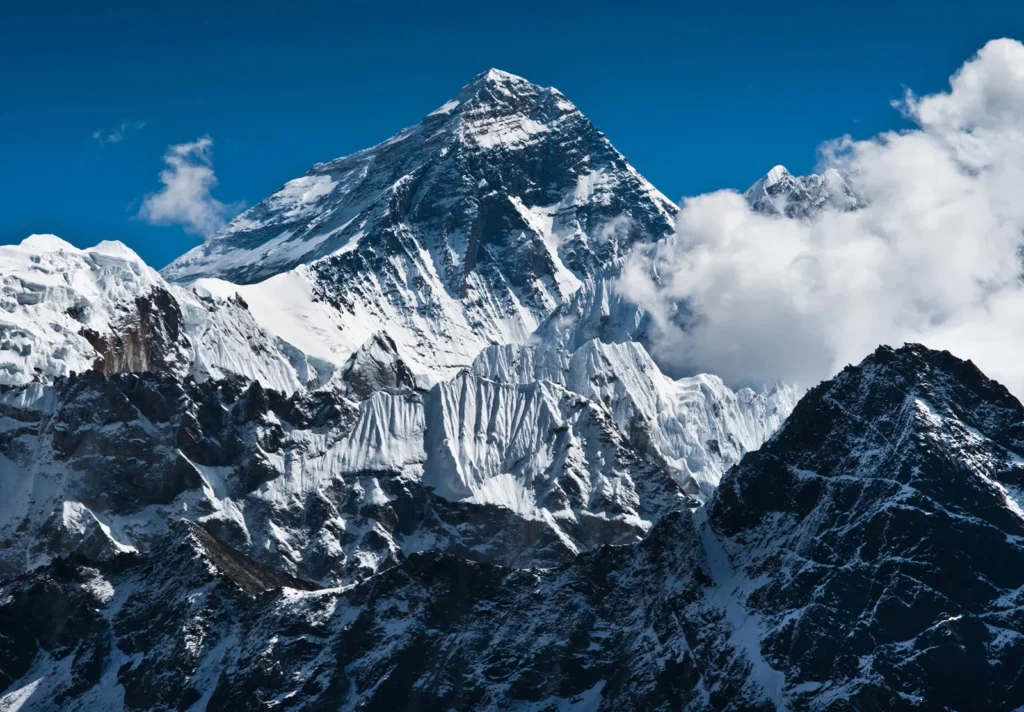
Everest comes to mind when you think of mountain climbing. The world’s tallest peak is a challenge as well as an ambition. With its thin air, erratic weather, and intimidating Khumbu Icefall, Everest, also known locally as Sagarmatha and Chomolungma in Tibet, challenges climbers to the limit. Notwithstanding the dangers, reaching the summit is an unparalleled life accomplishment.
2. Mount Lhotse (8,516m)
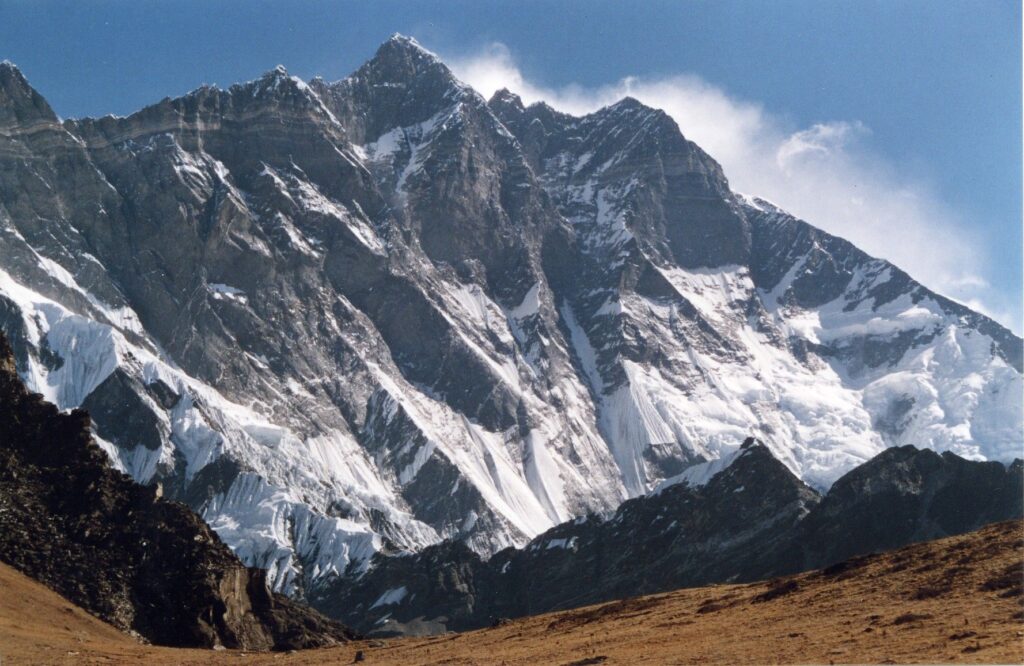
Standing right next to Everest, Lhotse shares part of the same route before diverging into a steeper and more technical climb. Often overshadowed by its big brother, Lhotse offers a quieter yet equally thrilling adventure. Its dramatic South Face is one of the steepest walls in the world.
3. Mount Makalu (8,485m)
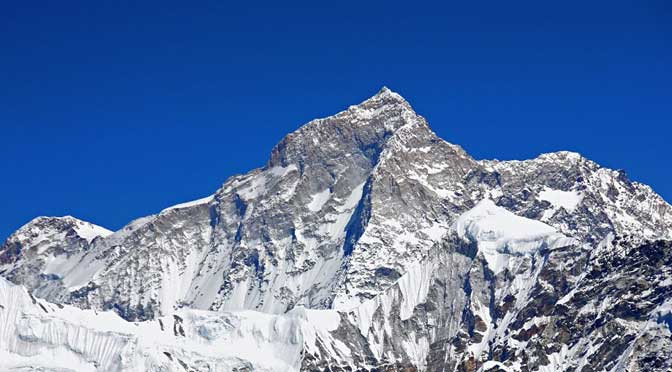
Wild, remote, and extremely difficult, Makalu is not for the weak of heart. Although it rises close to Everest, its pyramid-shaped top receives significantly fewer climbers. For individuals who enjoy isolation, challenging terrain, and breathtaking scenery, Makalu offers a once-in-a-lifetime experience.
4. Mount Cho Oyu (8,188m)
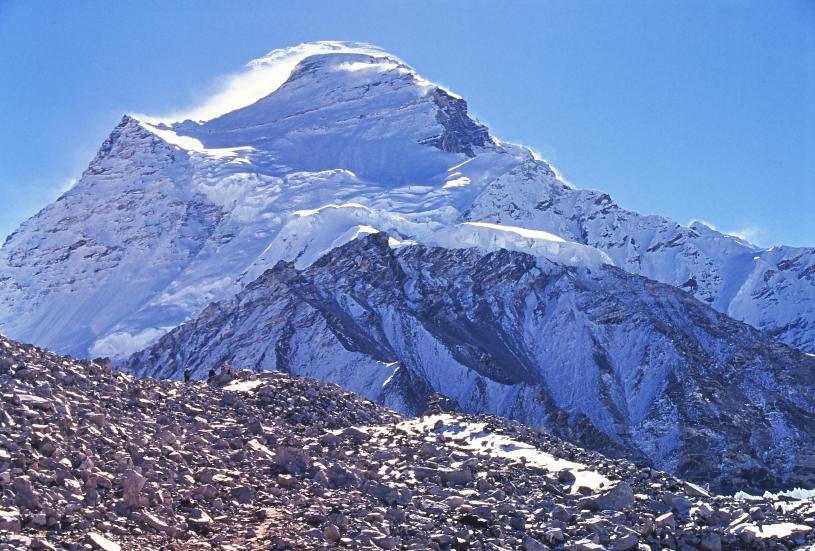
Dubbed the “Turquoise Goddess,” Cho Oyu is the sixth-highest mountain in the world and is considered one of the more achievable 8,000-meter peaks. With less technical climbing than Everest, it’s often the first big Himalayan climb for many aspiring mountaineers.
5. Mount Manaslu (8,163m)
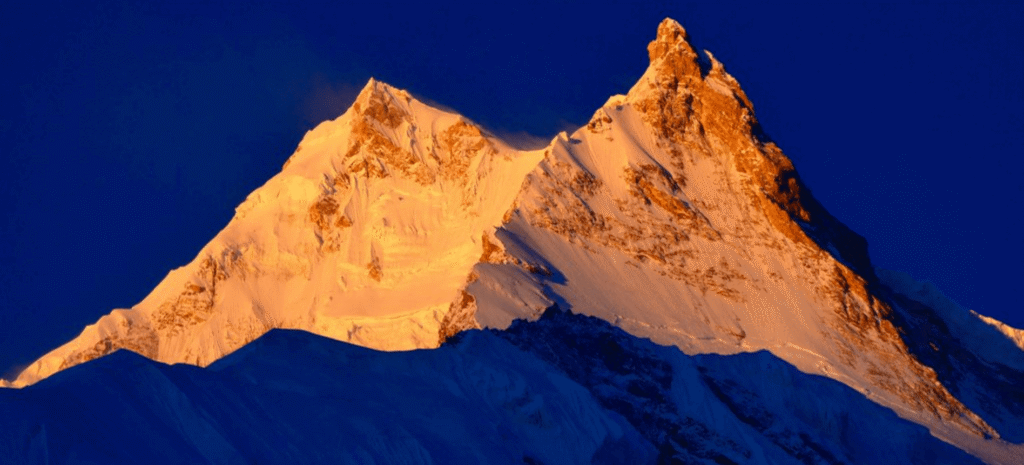
Manaslu, also called the “Mountain of the Spirit,” is a more subdued version of Everest. The route is as spiritual as the climb itself, with its pathways winding through Buddhist monasteries, tiny villages, and stunning scenery.
6. Mount Dhaulagiri (8,167m)
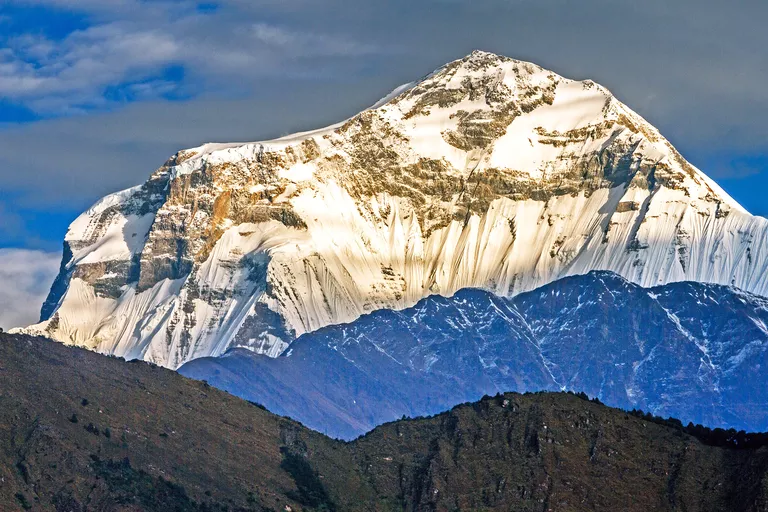
This enormous snow-capped summit is notorious for its treacherous slopes and difficult climbs. Experienced climbers who yearn for unadulterated, wild adventure should consider Dhaulagiri. It is one of the hardest climbs in Nepal because of its remote location and imposing appearance.
7. Mount Annapurna I (8,091m)
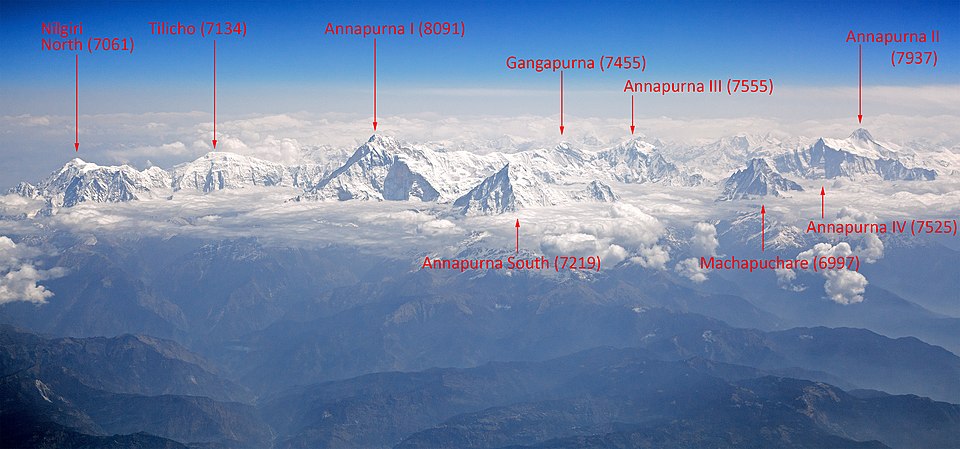
Despite her beauty, Annapurna is lethal. It requires competence and respect because it has one of the greatest death rates among the 8,000ers. Beyond its perils, however, Annapurna is encircled by one of Nepal’s most culturally diverse trekking routes, which combine tradition and excitement.
8. Ama Dablam (6,812m)
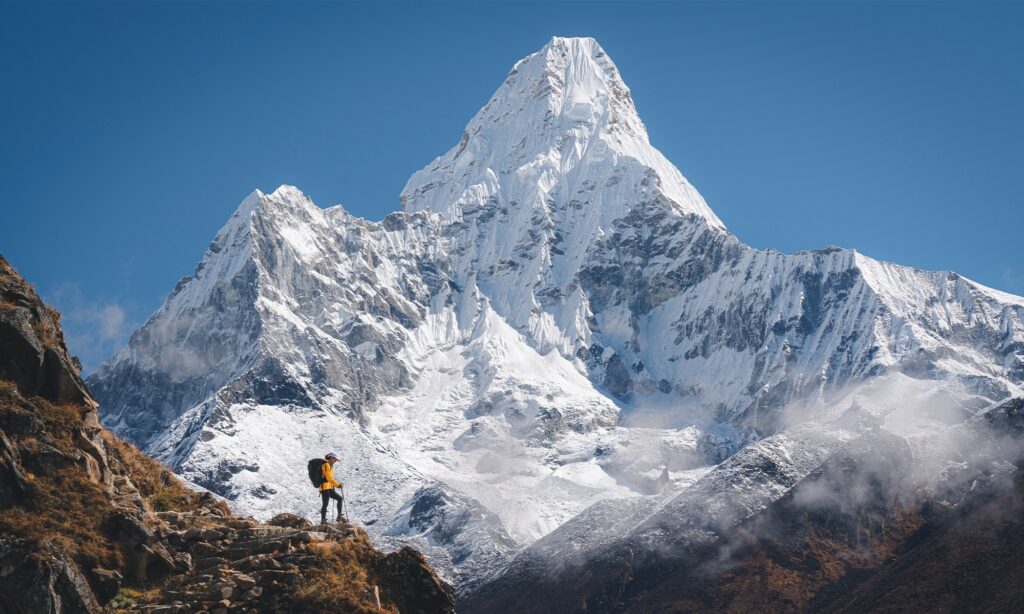
Ama Dablam, sometimes referred to as the “Matterhorn of the Himalayas,” is widely regarded as the world’s most magnificentMountain climbing in Nepal. It has a striking appearance due to its steep slopes and hanging glacier. It is a favourite among climbers looking for both challenge and grace because it is technically challenging but also very rewarding.
9. Island Peak (6,189m)
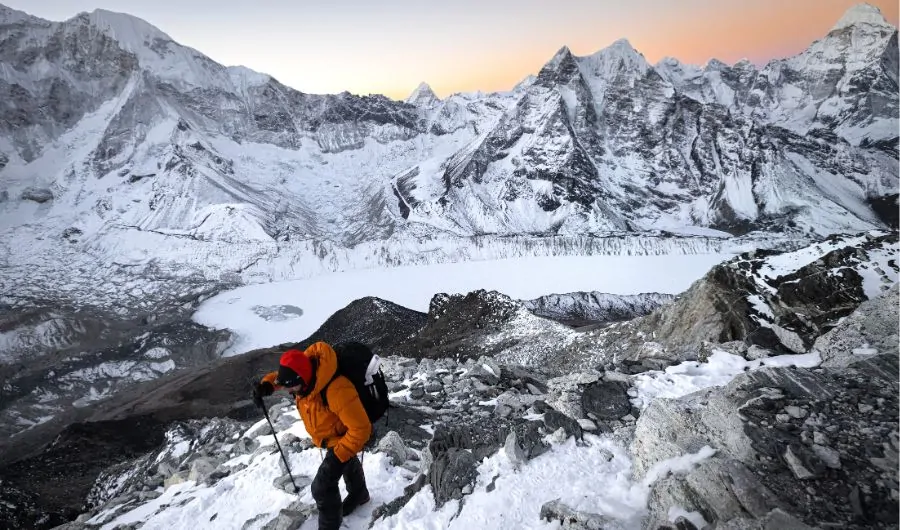
If Everest feels out of reach, Island Peak is the perfect alternative. This trekking peak is achievable for climbers with basic training and is often used as a stepping stone toward bigger expeditions. From the top, you’ll enjoy jaw-dropping views of Everest, Lhotse, and Makalu.
10. Mera Peak (6,476m)
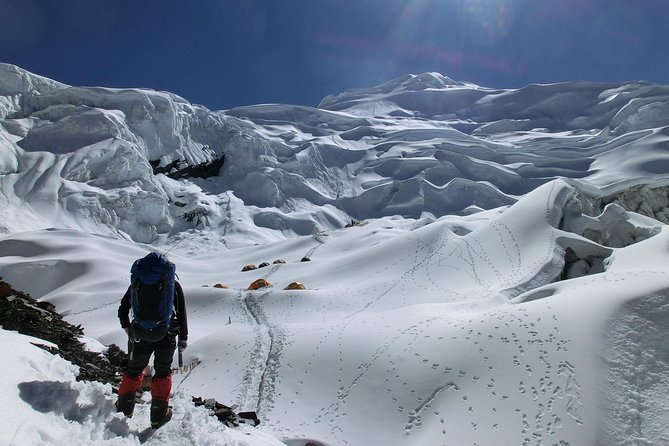
The highest trekking mountain in Nepal, Mera mountain, is a great option for novices who want to try Himalayan climbing. The altitude makes it a real challenge even though it’s less technical. Five 8,000-meter giants can be seen in the 360° panoramic panorama from the summit, which is a treat that makes every step worthwhile.
Preparing for Mountain Climbing in Nepal
Climbing in the Himalayas isn’t a walk in the park. Training your body for endurance, strength, and high-altitude adaptation is crucial. Beyond fitness, mental grit is key—because in the mountains, attitude matters as much as altitude. Don’t forget your gear: insulated boots, crampons, harnesses, ropes, and layered clothing are essentials.
Best Seasons for Climbing
Spring (March to May) and autumn (September to November) are the golden seasons. Spring offers stable weather and colorful rhododendron blooms, while autumn provides crisp skies and incredible visibility. Winter is brutally cold, and monsoon brings heavy rain—best avoided unless you’re extremely experienced.
Safety and Permits
There are stringent climbing regulations in Nepal. Permit requirements vary each summit and must be obtained by all climbers. Employing certified Sherpas and guides improves safety while also assisting local businesses. Always have high-altitude evacuation insurance on hand since things might change drastically in the Himalayas.
Cost of Mountain Climbing in Nepal
Climbing costs range widely. Trekking peaks like Island Peak may cost around $3,000–$5,000, while Everest expeditions can soar beyond $40,000. Logistics, permits, gear, and guide services all add up, so budgeting wisely is essential.
Cultural Experience Along the Climb
Beyond the summits, Nepal is about people. You’ll meet Sherpas whose resilience and warmth define the Himalayan spirit. You’ll pass prayer flags fluttering in the wind, hear chants from centuries-old monasteries, and taste traditional Nepali food in mountain villages. These cultural encounters enrich the adventure far beyond the climb itself.
Eco-Friendly Climbing Practices
With great adventure comes great responsibility. The Himalayas are fragile, and climbers must follow sustainable practices—carry your trash, avoid single-use plastics, and respect local customs. Supporting eco-friendly lodges and community-driven projects helps preserve Nepal’s mountain heritage for generations to come.
Also visit:
Secret Treasures: Discovering Hidden Gems in Italy
Hidden Gems in Italy: Exploring Beyond the Tourist Trail
Hidden Gems in Italy That Will Take Your Breath Away
The Best Beaches in Florida for Nightlife and Entertainment
The Best Beaches in Florida for Beach Volleyball
Conclusion
Climbing in Nepal is a journey of self-discovery rather than merely an adventure. Every climb has a unique narrative to tell, from famous giants like Everest to reachable trekking peaks like Island and Mera. Nepal’s mountains offer lifelong memories, whether you’re seeking spiritual serenity, exhilaration, or the pure delight of reaching a summit.

